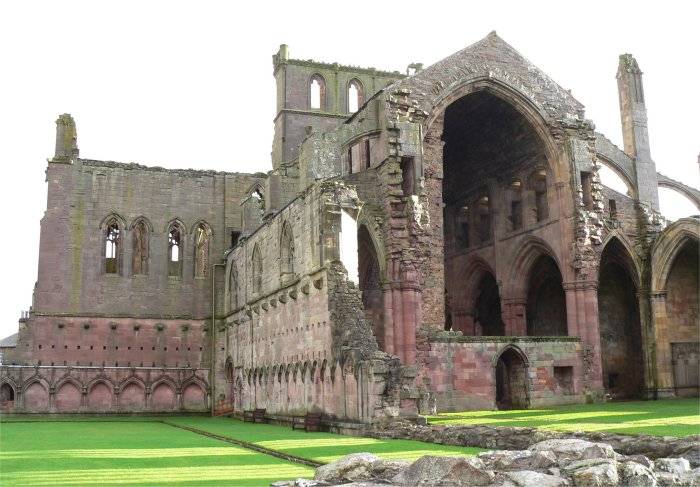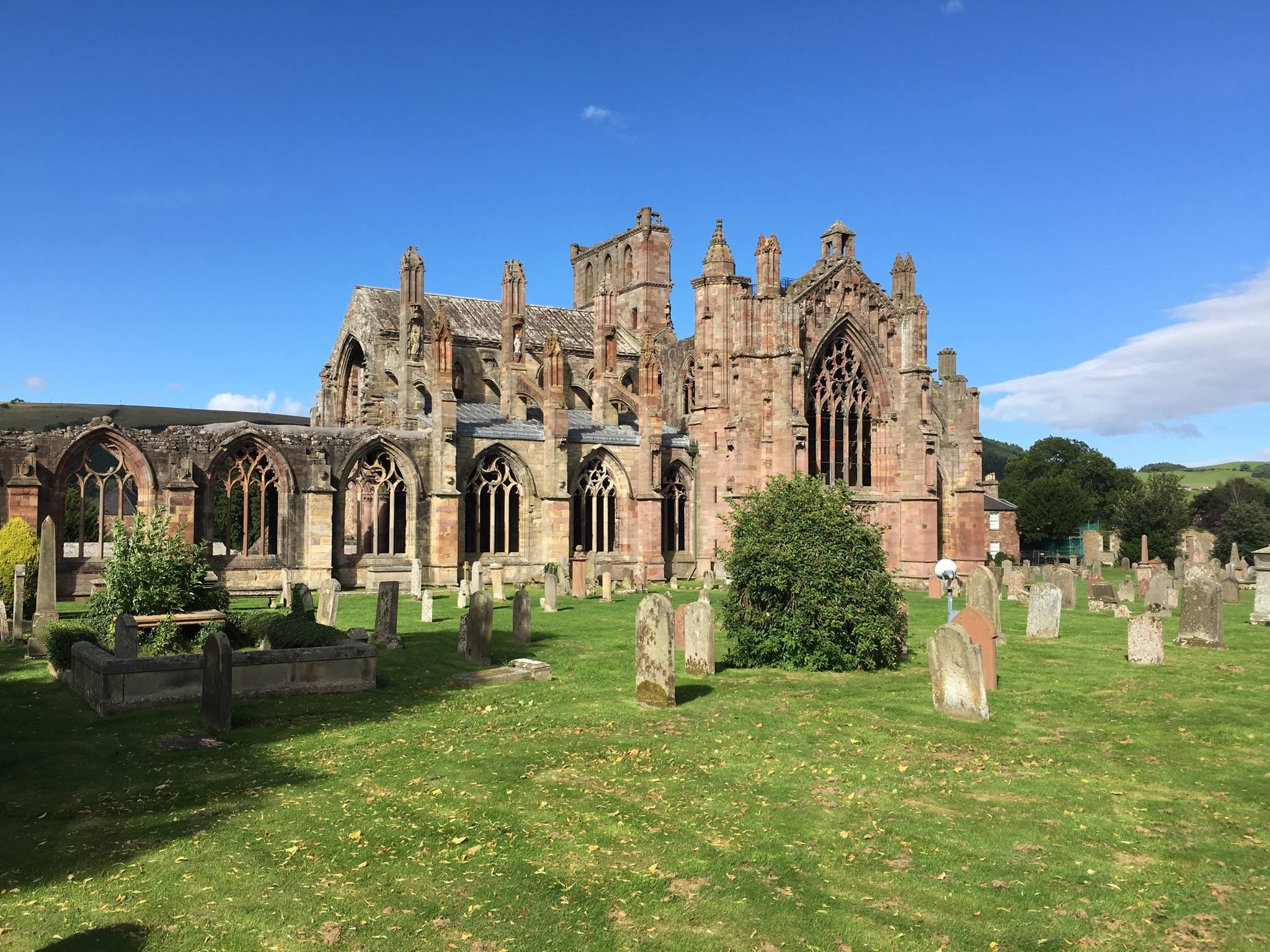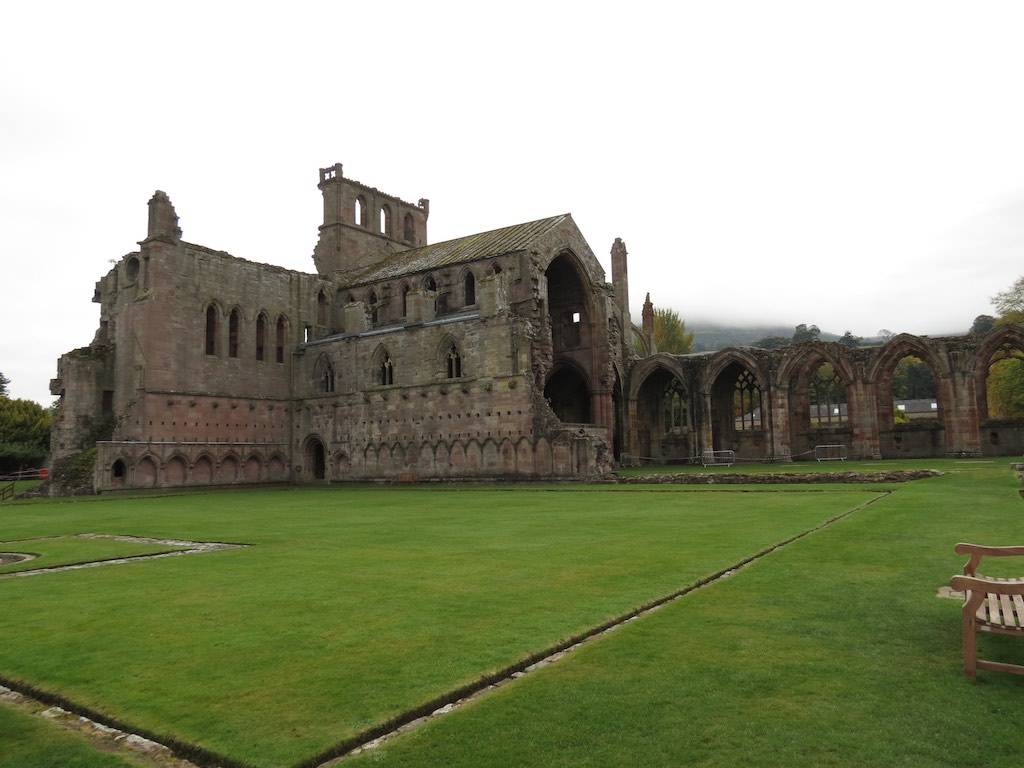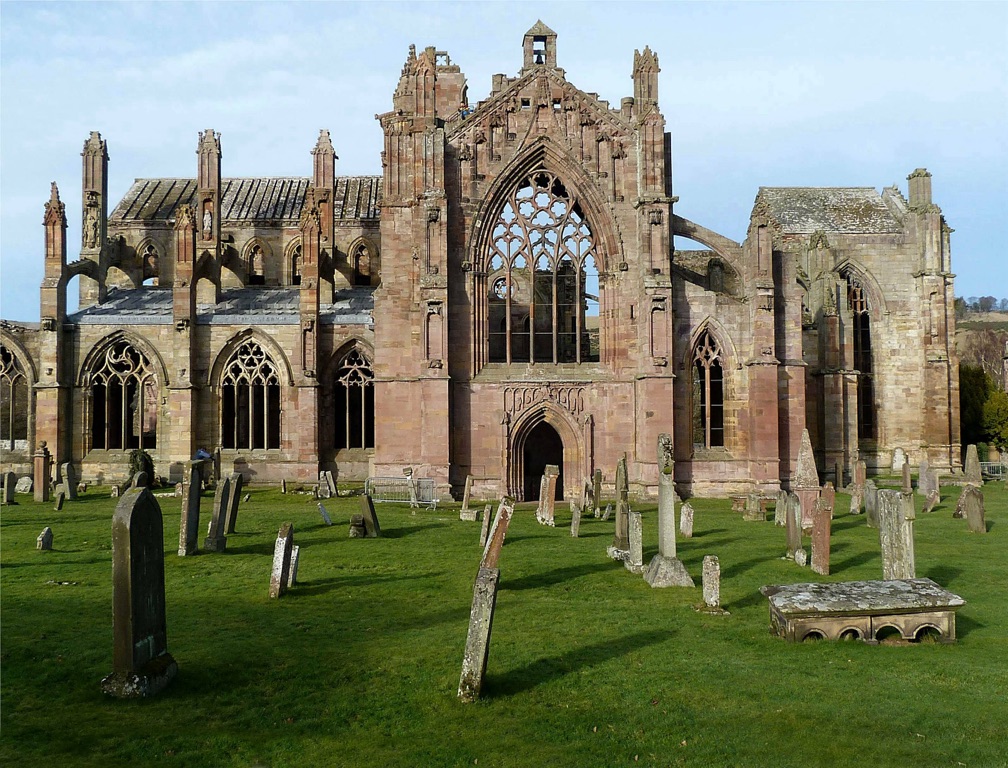Melrose Abbey, a magnificent ruin in the Scottish Borders, whispers tales of medieval grandeur and spirituality. Founded in 1136 by Cistercian monks at the request of King David I of Scotland, it’s renowned for its rich history and stunning Gothic architecture. The abbey has witnessed centuries of history, including raids, restorations, and the interment of the heart of Robert the Bruce, a legendary Scottish king. Today, it stands as a testament to Scotland’s past, attracting visitors from around the globe.
Get your dose of History via Email
Historical Background of Melrose Abbey
King David I of Scotland founded Melrose Abbey in 1136. It was the first Cistercian abbey in Scotland. The monks came from Rievaulx Abbey, a Cistercian monastery in North Yorkshire, England. They established Melrose Abbey in the Scottish Borders for its seclusion and fertile land. Over the centuries, the abbey flourished as a site of religious devotion and learning.
Throughout its history, Melrose Abbey faced numerous attacks, particularly during the Middle Ages. The English army frequently targeted it during the Wars of Scottish Independence. Despite this, the abbey remained a site of significant cultural and religious importance. It was also a place of innovation, with the monks practicing advanced farming techniques and contributing to the spread of knowledge.

In the 14th century, the abbey was rebuilt in the Gothic style after a destructive raid. This reconstruction is largely what visitors see today. The abbey’s connection to Robert the Bruce is one of its most notable historical aspects. His heart, encased in lead, was buried at the abbey, symbolizing his enduring love for Scotland.
After the Protestant Reformation in the 16th century, Melrose Abbey’s influence waned. Monastic life ceased, and the abbey fell into disrepair. Over time, it became a quarry for building materials, which led to further deterioration. However, its historical significance ensured that it would not be forgotten.
In the 19th century, Sir Walter Scott, a historical novelist, and poet, helped raise awareness of the abbey’s cultural importance. This led to preservation efforts that continue to this day. The abbey is now a protected historic site, managed by Historic Environment Scotland, and remains a poignant symbol of Scotland’s medieval heritage.
About Melrose Abbey
Melrose Abbey is a masterpiece of medieval architecture. Its intricate stone carvings and pointed arches are hallmarks of the Gothic style. The abbey’s church was cruciform in plan, with an ornate rose window that is a marvel to behold. The ruins still convey the grandeur that the complete structure would have had.

The building materials consist primarily of local stone, giving the abbey its distinctive appearance. The monks used the abundant sandstone from nearby quarries, which has weathered to a warm, pinkish hue over the centuries. This choice of material not only provided durability but also aesthetic beauty.
Architectural highlights include the surviving rib-vaulted roof of the abbey’s south transept and the lavishly decorated east end. The abbey’s design reflects the Cistercian emphasis on simplicity and austerity, yet it also features elaborate decorative elements. These include carvings of saints, dragons, and other mythical creatures.
The abbey’s layout was typical of Cistercian monasteries, with cloisters, a chapter house, and domestic buildings surrounding the church. The cloister garth, a central courtyard, was the heart of monastic life, where monks would meditate and read. Despite the ruinous state, the remnants of these structures give insight into the daily lives of the monks.
Conservation work has been ongoing to preserve Melrose Abbey for future generations. Visitors can explore the site and imagine the once-thriving monastic community. The abbey’s museum houses artifacts found during excavations, including medieval tools and religious items, which further illustrate the abbey’s historical significance.

Theories and Interpretations
Several theories and interpretations surround Melrose Abbey, adding to its mystique. One theory suggests that the abbey’s location was chosen for its proximity to an ancient spiritual site. This would align with the Cistercian practice of building monasteries in secluded, sacred places.
Another interpretation relates to the abbey’s architecture. Some scholars believe that the ornate carvings and sculptures contain hidden meanings. These could be moral lessons or biblical stories, intended to educate the illiterate populace of the time.
The mystery of Robert the Bruce’s heart also intrigues historians. While his body rests in Dunfermline Abbey, the decision to bury his heart at Melrose suggests a special connection. Some speculate that it was a nod to the abbey’s significance or a fulfillment of a vow made by the king.
Historical records have been matched to the abbey’s physical evidence to piece together its past. Archaeological excavations have uncovered graves, building foundations, and everyday objects. These findings help historians understand the abbey’s evolution and the lives of its inhabitants.
Dating of the abbey’s construction phases has been carried out using architectural analysis and historical documentation. The precise dating of certain sections remains challenging, but the general chronology of the abbey’s development is well-established. This helps to contextualize Melrose Abbey within the broader tapestry of Scottish history.

At a glance
Country: Scotland
Civilization: Cistercian Order
Age: Founded in 1136 AD
Conclusion and Sources
Reputable sources used in creating this article:
- Wikipedia: https://en.wikipedia.org/wiki/Melrose_Abbey
- Historic Environment Scotland: https://www.historicenvironment.scot/visit-a-place/places/melrose-abbey/

